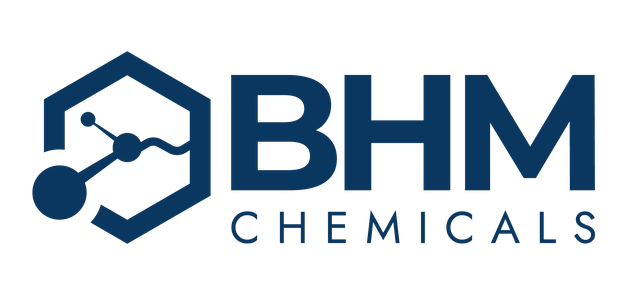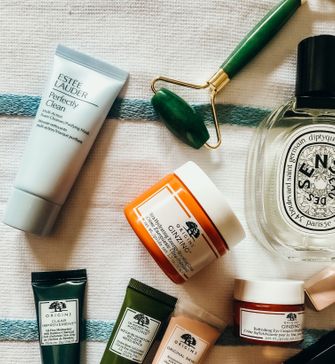Butylated Hydroxyanisole
PRESERVATIVE
CAS no. 25013-16-5
Butylated Hydroxyanisole (BHA) is a synthetic antioxidant produced from 4-methoxyphenol and isobutylene. Its properties have caused it to be a popular preservative in food, food packaging, animal feed, cosmetics, pharmaceuticals, rubber, and petroleum products.
BHM Chemicals is a supplier of Ph. Eur. and Food quality Butylated Hydroxyanisole (BHA) suitable for use in various applications.
Minimum order quantity: 5kg
Butylated Hydroxyanisole (BHA), a synthetic organic compound, has established itself as a versatile antioxidant with a fascinating history and an array of uses and benefits across various industries.
Historical Origins of BHA
The history of BHA dates back to the mid-20th century when it was first synthesized by German chemists Fritz Stoll and Ernest Rüttimann. BHA was initially developed for its antioxidant properties and, subsequently, found applications in a multitude of fields, including food preservation, cosmetics, and pharmaceuticals.
Properties
Butylated Hydroxyanisole is characterized by several key properties that make it a valuable ingredient in various applications:
-
Antioxidant Activity: BHA's primary function is its potent antioxidant properties. It works by inhibiting the oxidation of substances and acts as a free radical scavenger, preventing the deterioration of products.
-
Lipophilic Nature: BHA is fat-soluble, making it an effective antioxidant in lipid-containing products, including fatty foods and certain cosmetics.
-
Stability: BHA is stable and can withstand high temperatures and a wide range of pH levels. This stability is crucial for its use in products that undergo processing or storage.
-
Safety: BHA has a long history of safe use and has been extensively studied for its potential health effects. It is considered Generally Recognized As Safe (GRAS) by the U.S. Food and Drug Administration (FDA) when used in approved concentrations.
Uses
BHA's versatility is evident through its extensive range of applications across different industries:
1. Food Industry:
-
Food Preservation: BHA is widely used as a food preservative to extend the shelf life of various products. It prevents the rancidity of fats and oils in foods by inhibiting lipid oxidation.
-
Packaging Materials: BHA is utilized in packaging materials, such as food-grade plastic films and coatings, to protect packaged foods from oxidative damage.
2. Cosmetics and Personal Care:
-
Skincare Products: BHA is an ingredient in various skincare products, including creams, lotions, and lip balms, due to its antioxidant properties and ability to enhance product stability.
-
Makeup: BHA can be found in cosmetics such as foundations and lipsticks, contributing to their longevity and preventing spoilage.
3. Pharmaceuticals:
-
Medicinal Products: BHA is used in pharmaceutical formulations to protect active ingredients and improve the stability of drugs. It can be found in oral medications, creams, and ointments.
-
Vitamin Supplements: BHA is used in the production of vitamin supplements to prevent the degradation of vitamins, particularly fat-soluble ones like vitamin E.
4. Industrial and Manufacturing:
-
Rubber and Petroleum Industries: BHA is added to rubber and petroleum products to prevent degradation and prolong their lifespan.
-
Textiles: BHA is used in textile processing to enhance the stability of dyes and other chemicals used in the industry.
Benefits
The multifaceted applications of BHA bring forth a variety of benefits in different industries:
1. Food Preservation:
-
Extended Shelf Life: BHA helps prevent spoilage and rancidity in food products, thus extending their shelf life and reducing food waste.
-
Quality Retention: By preserving the quality and flavor of food items, BHA contributes to maintaining consumer satisfaction.
2. Cosmetics and Personal Care:
-
Product Stability: BHA enhances the stability of cosmetic and personal care products, ensuring that they remain effective and free from spoilage.
-
Prolonged Shelf Life: Makeup and skincare products containing BHA can have a longer shelf life, reducing the frequency of product replacement.
3. Pharmaceuticals:
-
Drug Efficacy: BHA helps protect the efficacy of drugs by preventing degradation, ensuring that patients receive the intended therapeutic benefits.
-
Safe Formulations: BHA assists in formulating safe and stable medicinal products that meet regulatory standards.
4. Industrial and Manufacturing:
-
Material Longevity: In rubber, petroleum, and textile industries, BHA helps extend the life of materials and reduces the need for frequent replacements.
-
Cost Savings: Longer-lasting materials and reduced production losses lead to cost savings for manufacturers.
Butylated Hydroxyanisole (BHA) has carved a prominent place for itself as a versatile and reliable antioxidant in various industries. Its ability to extend the shelf life of food, stabilize cosmetics and pharmaceuticals, and protect industrial materials is a testament to its multifaceted utility. As it continues to be a key component in numerous products, BHA remains a cornerstone in preserving quality, prolonging the lifespan of materials, and reducing waste across industries. Careful consideration of safety regulations and appropriate usage levels ensures that BHA is employed effectively, enhancing the longevity and quality of a wide range of consumer and industrial goods.
Please note that the information provided in this article is for informational purposes only and should not be considered a substitute for professional medical advice. Always consult with healthcare professionals or chemists for guidance on the appropriate use and handling of any substance in specific applications.
References
- Williams, M. H. (2007) Antioxidants. Nutrition in Clinical Practice, 22(5), 491-495.
- Shahidi, F. (1997) Natural antioxidants: chemistry, health effects, and applications. Champaign, Illinois: AOCS Press.
- Tappel, A. L. (2007) Antioxidants in cell biology and medicine. Bioscience Reports, 27(3-4), 155-171.
- Kahl, R., & Kappus, H. (1993) Toxicology of the synthetic antioxidants BHA and BHT in comparison with the natural antioxidant vitamin E. Zeitschrift für Lebensmittel-Untersuchung und Forschung, 196(4), 329-338.
PRODUCT SPECIFICATION
CHARACTERISTICS
Identification
Appearance of solution
Related substances
Heavy metals
Sulphated ash
HAZARDOUS IDENTIFICATION
STORAGE
A white, yellowish or slightly pinkish, crystalline powder, practically insoluble in water, very soluble in methylene chloride, freely soluble in alcohol and in fatty oils. It dissolves in dilute solutions of alkali hydroxides.
Conforms to Ph. Eur. tests
As per Ph. Eur. test: Solution S is clear and not more intensely coloured than intensity 5 of the range of reference solutions of the most appropriate colour
Not more than 0.5%
Maximum 10ppm
Maximum 0.1%
Hazardous chemical Class 9, UN 3077, Packing group III
Keep container tightly closed in a cool and dry place and protected from light. Protect from contamination by foreign substances.







